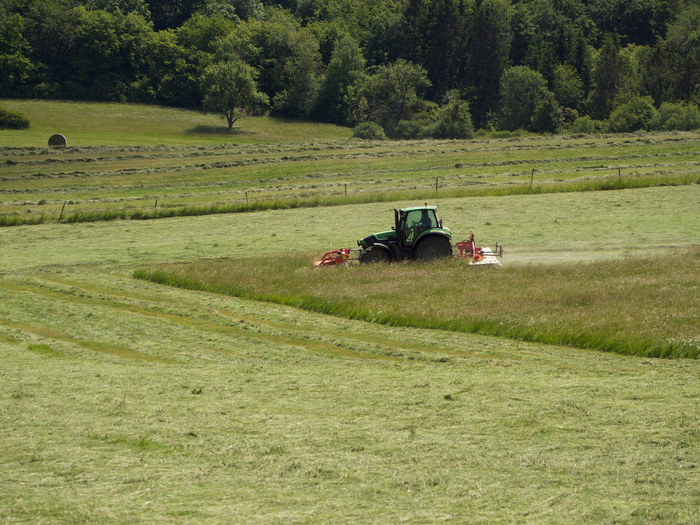Ecosystem services like natural pests or pollination control provide advantages to nature and the agricultural industry.

The biodiversity of agricultural meadows and pastures plays an important role for a variety of ecosystem services. Image Credit: Peter Manning / SGN.
To gain more insight into biodiversity dynamics, an international research group headed by Dr. Gaëtane Le Provost and Dr. Peter Manning from the Senckenberg Biodiversity and Climate Research Center in Frankfurt learned about agricultural pastures and meadows in several rural regions in Germany.
In the process performed, they assessed data gathered continuously since 2006 as part of the so-called “Biodiversity Exploratories” project for regions in the Swabian Alb, the Hainich-Dün region of central Germany, and the Schorfheide-Chorin Biosphere Reserve in Brandenburg.
The areas differ in climate and topography and at the same time serve as examples for different types of typical grassland use in Central Europe.
Le Provost, Senckenberg Biodiversity and Climate Research Center
Provost continued, “We studied a total of 150 grassland areas during the period from 2006 to 2018 and for the first time examined 16 different ecosystem services—from forage quality and pollination to numerous soil quality factors such as carbon storage or groundwater recharge, to so-called cultural ecosystem services that affect our experience of nature.”
“For example, the opportunity for birdwatching—or simply the therapeutic sight of a lush meadow in bloom and the wealth of acoustic stimuli provided by a species-rich grassland through birdsong and other nature sounds. We were able to demonstrate that high plant diversity has a positive effect on a large number of ecosystem services!” added Provost.
Initially, the scientists also analyzed the importance of ecosystem services for several local stakeholders in their study, which was reported in the journal Nature Ecology & Evolution.
In collaboration with the Institute for Social-Ecological Research (ISOE) Frankfurt, local residents, as well as agricultural and tourism industries and representatives of nature conservation organizations, were invited to attend workshops and were liable to representative surveys.
We found that, without exception, all of the groups surveyed could benefit from a high level of biodiversity—from local residents to the tourism industry.
Sophie Peter, Research Associate, Institute for Social-Ecological Research
Finally, the research group was able to illustrate the advantages of high plant diversity not only for smaller areas but considering the biodiversity dynamics linked to the bigger surrounding.
The fact that the plant diversity of the surrounding area has an influence on the provision of various ecosystem services is an important basis for local decision-makers.
Dr Peter Manning, Senckenberg Biodiversity and Climate Research Center
Manning added, “Political decisions on land use are usually made on a large geographic scale. Our data show that even at these large scales, a high plant diversity offers benefits to all involved parties!”
Journal Reference:
Provost, G. L., et al. (2022) The supply of multiple ecosystem services requires biodiversity across spatial scales. Nature Ecology & Evolution. doi.org/10.1038/s41559-022-01918-5.